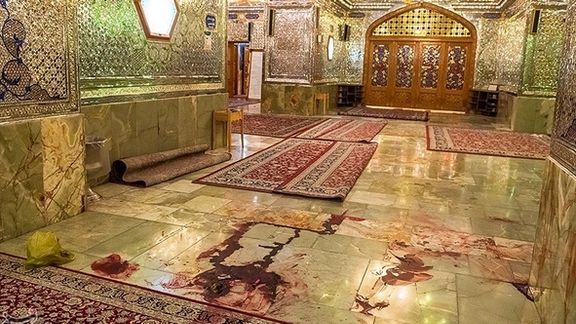Iran Executes Two Men Charged With Terror Attack On Shrine

Iran hanged two Afghan men in public on Saturday who were accused of playing a role in an attack on a shrine in October where 15 people died and 20 were wounded.

Iran hanged two Afghan men in public on Saturday who were accused of playing a role in an attack on a shrine in October where 15 people died and 20 were wounded.
Mohammad Ramez Rashidi and Naeem Hashem Ghetali were hanged in a street near the Shahcheragh Shiite shrine and mausoleum in the southern city of Shiraz early in the morning. Iran's official news agency IRNA said they were hanged before dawn with “hundreds of the families of the martyrs” and other citizens of Shiraz witnessing the executions.
The attack on Shahcheragh shrine took place October 26 last year when anti-regime protests were raging on in Iran. This led to speculations and accusations that the attack was staged by the government to divert attention from the protests and also justify a crackdown.
However, in a strange twist, the Islamic State group took responsibility for the attack, which fit the government narrative of Iran being under attack by extremists.

The lone gunman, who entered the shrine with an assault rifle, was shot and wounded during the attack and the government said he died later in the hospital and identified him as a citizen of Tajikistan. The two men who were hanged July 8 were accused of playing a direct role in the "arming, procurement, logistics, and guidance of the main perpetrator" of the terrorist attack.
Iranian human rights groups have said that the trial of the two men was not held according to legal standards and their conviction and subsequent death penalties were illegal.
Mahmood Amiry-Moghaddam, director of Norway-based Iran Human Rights, said Thursday that the two Afghan nationals were sentenced to death after “grossly unfair trials where no evidence was presented against them.”
Documents released by a hactivist group in early December showed that the Revolutionary Guard might have has foreknowledge of the attack and did nothing to stop it.
The documents, released by hacking group Black Reward, were several reports prepared by the IRGC’s media arm, Fars news agency, which were marked “top secret” and indicated that the author believed at least parts of Iran's several intelligence organizations had knowledge of an imminent terrorist attack but did not take any action to stop it.
Many Iranians immediately after the attack began accusing the regime of organizing the terror act as some kind of distraction from the boldest and most widespread protests in 43 years of clerical rule. Some even alleged that the government of complicity with ISIS in the attack to create its own narrative and martyrs to divert attention from fierce anti-regime protests.
CCTV footage shown on state TV showed the gunman entering the popular shrine despite the usual heavy security measures with a weapon and firing at worshippers as they tried to flee and hide in corridors.
The attacker, identified as Sobhan Komrooni with the nickname “Abu Aisha”, a citizen of Tajikistan, later died in a hospital from injuries sustained during the attack, according to the government.
Iran's intelligence ministry in a statement in November claimed that a citizen of the Republic of Azerbaijan who was the “main element of directing and coordinating the attack” had flown from Baku and entered Iran through Tehran’s Imam Khomeini Airport. According to the statement, he had then contacted the ISIS network of foreign nationals in Iran and organized the attack.
Some people at the time also noted a similarity with a 1994 terrorist attack on the shrine of Imam Reza in Mashhad which killed and injured dozens of people. Although a Sunni group had claimed responsibility, the government laid the blame on the People’s Mujahedin Organization of Iran (MEK). However, the former Interior Minister Abdollah Nouri claimed during his trial in 1999 that it was a false flag operation by the Iranian regime to discredit MEK.